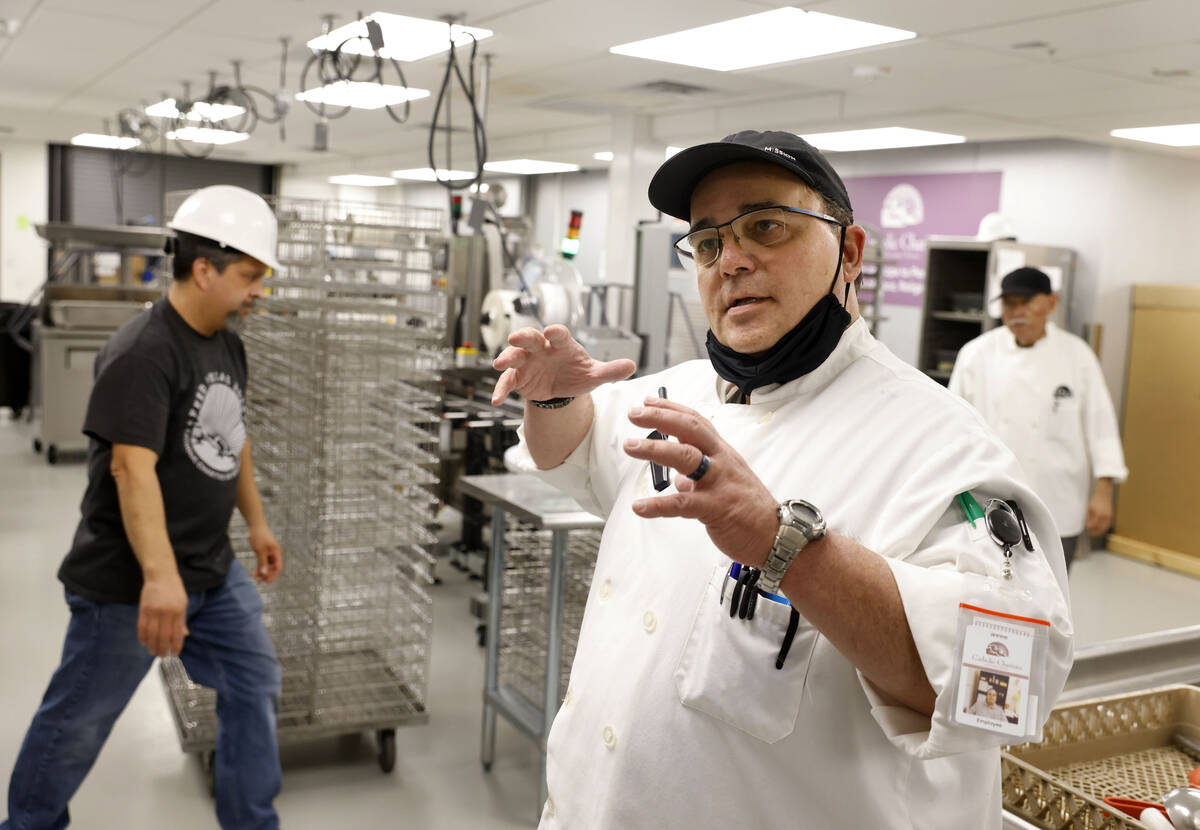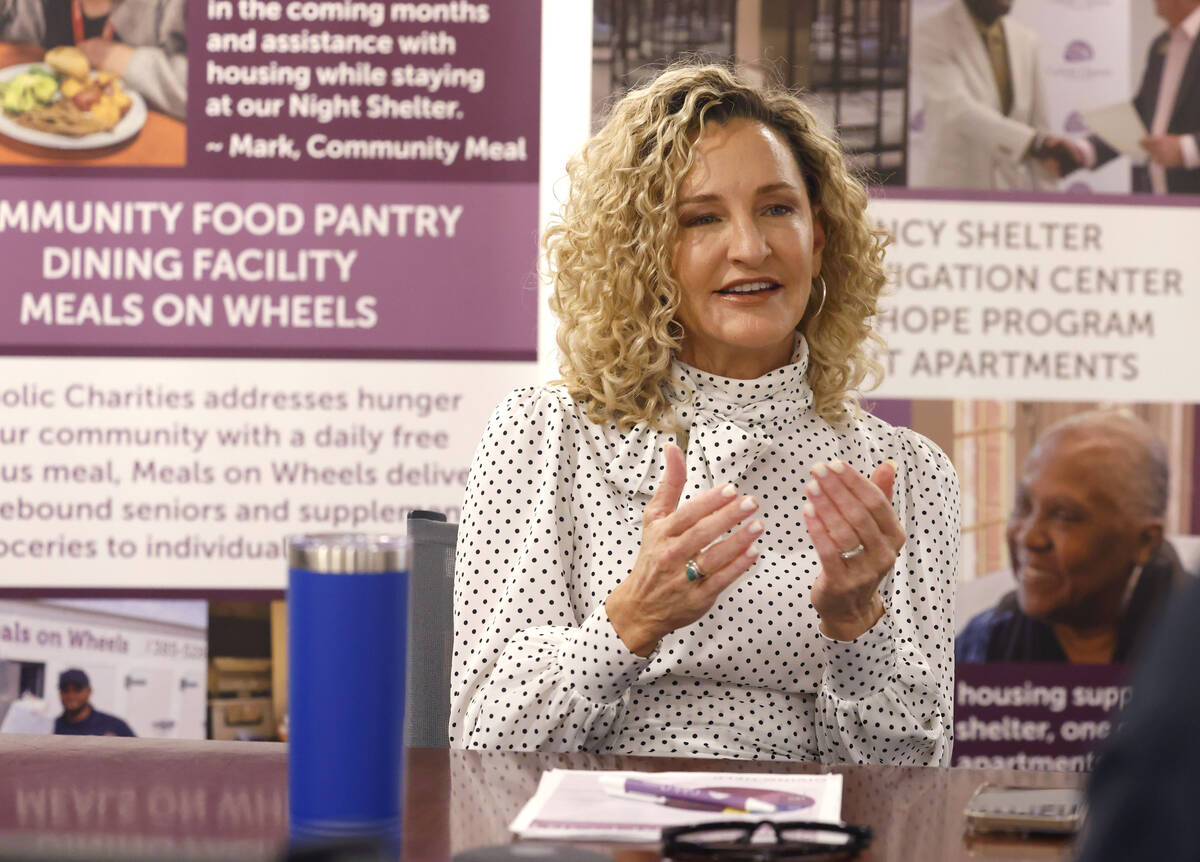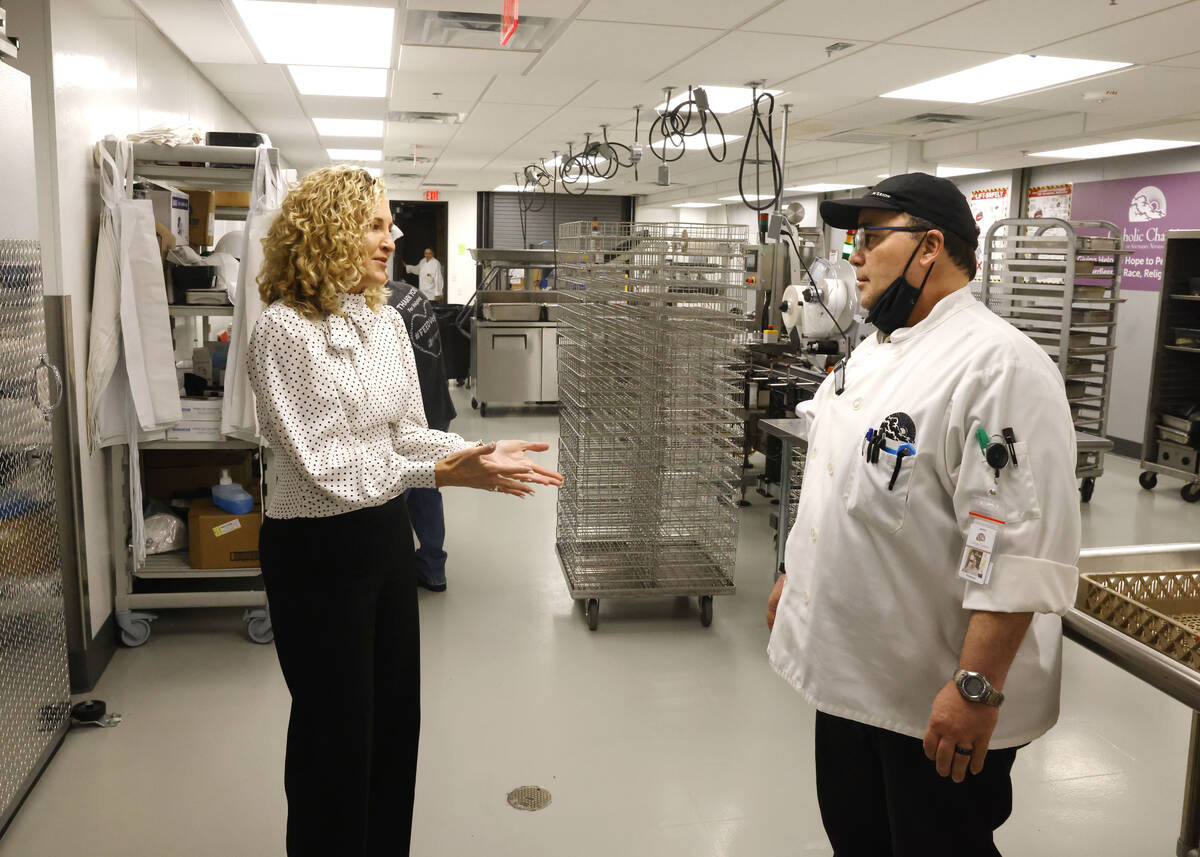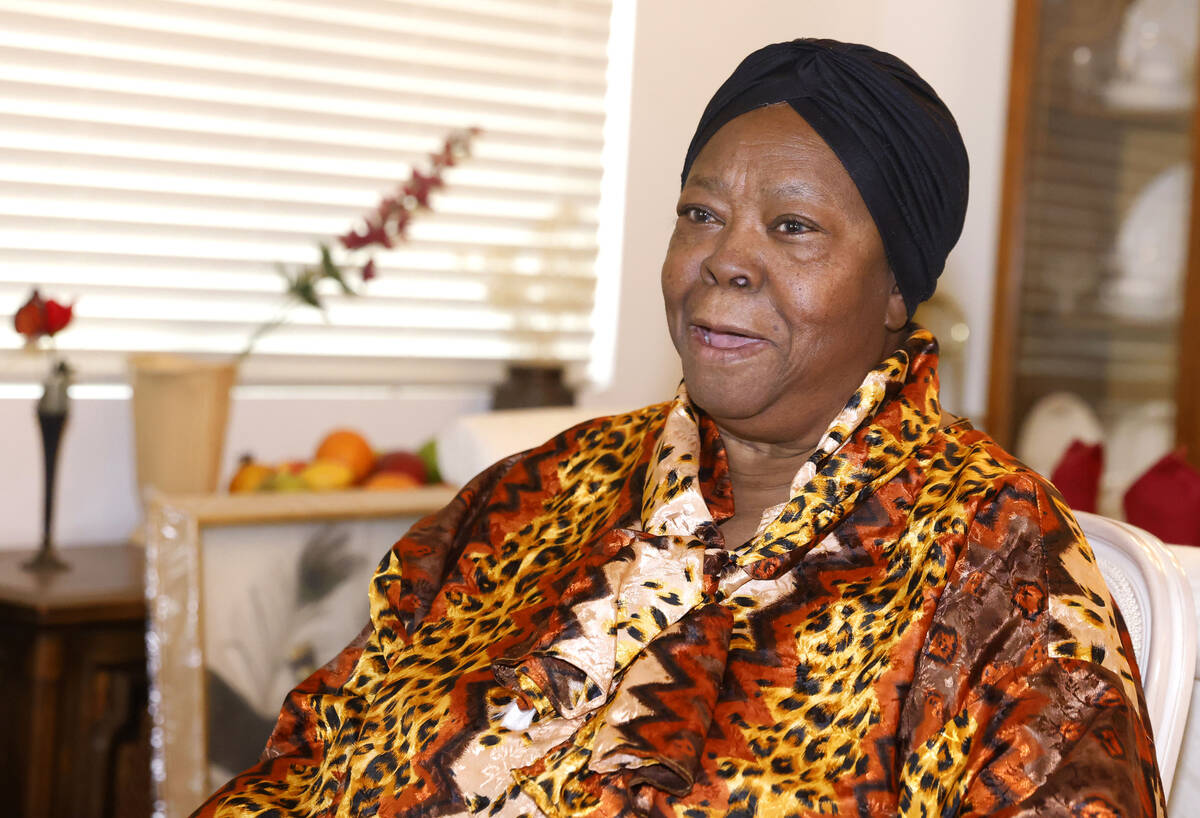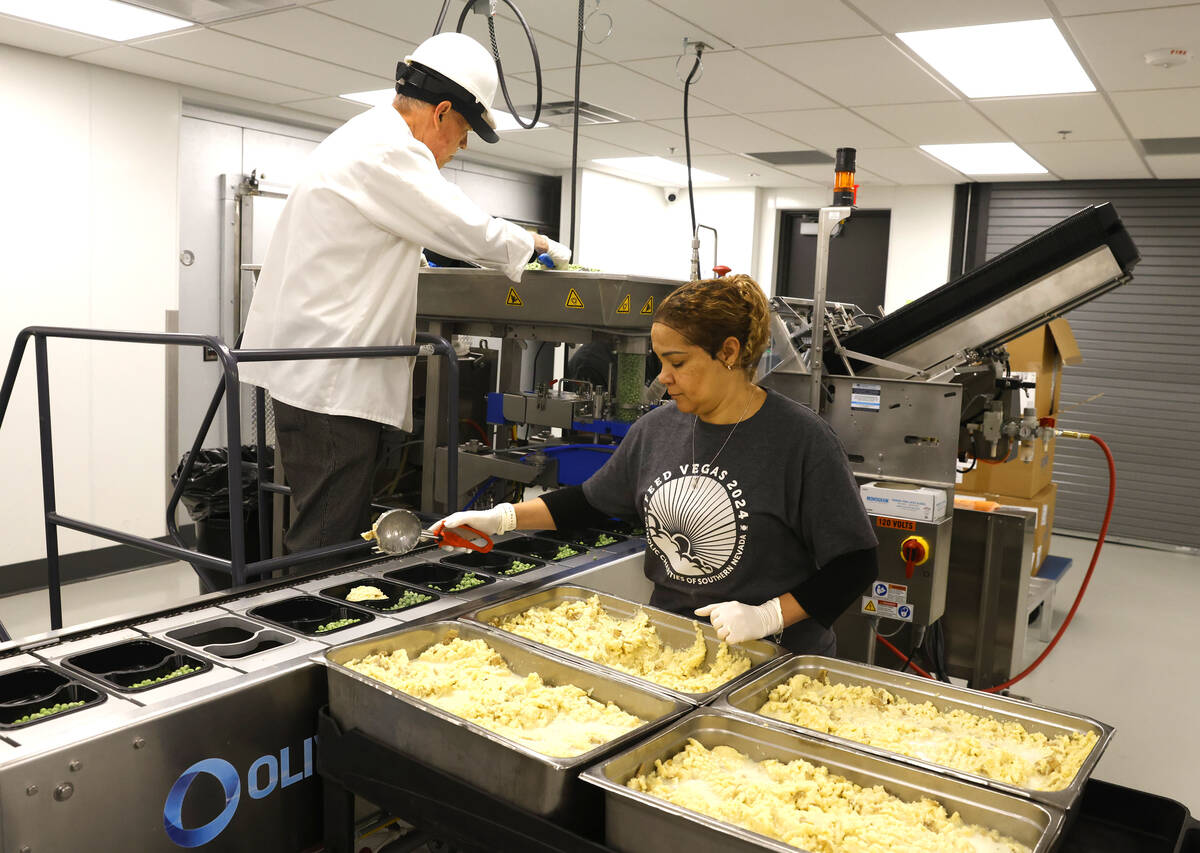‘We cover lifespan of services’: New Catholic Charities CEO talks goals, volunteerism
Each morning she drives to work, two things take the breath away from new Catholic Charities of Southern Nevada CEO Sara Ramirez.
“The first one is coming off of Summerlin Parkway onto the 215 (Beltway) and getting to see the sun coming up,” she told the Las Vegas Review-Journal during a Monday interview.
“And then my second time that my breath is taken away is when I turn down Main Street to turn to work and see the abundance of the homeless population, of people from all different walks of life, ages, out on the streets,” she added.
Ramirez took the helm of the nonprofit, which offers services including shelter and meals for those with food insecurity, in December after Deacon Tom Roberts retired.
The local Catholic Charities has been engrained in the Las Vegas Valley since 1941. Ramirez has served in various positions within the national nonprofit for the past two decades.
During the interview Ramirez expressed excitement and passion for the work the nonprofit staff does every day, and spoke about the challenges of taking care of a growing population and possible federal funding cuts.
The interview has been condensed and edited for brevity.
What are some of the services offered by Catholic Charities Southern Nevada?
We’re like an onion. You just keep pulling back the layers of the services we offer at the mission. And one of the greatest things about Catholic Charities is our breadth of services. Here in Southern Nevada, we do everything from helping new moms and dads give their children a healthy start at life all the way to assisting our senior citizens. So we cover the entire lifespan of services that a family or an individual might need in their lifetime, and that’s great for us, because we have content experts in certain areas.
How many people does the nonprofit feed?
We distribute over 3 million meals every single year, whether it’s through our lead dining hall, where we do between 400 and 600 meals a day. We make sure that no family goes hungry in the moment. Especially now with the economic challenges that are going on, we have a food pantry that individuals can come in and get some of their supplemental needs met, so that they’re not choosing between heat and hunger during the summer.
With our “Meals on Wheels” program, we’re able to package and put together 1,700 meals an hour. We’ve really ramped up this mission to be able to meet the needs of our senior population that are homebound. That program is really important to us because it cost us $62 a (week) to be able to feed an individual where, if they went into a state Medicaid assisted living facility, it’s well over $1,000 a (week).”
Any challenges that are specific to the Las Vegas Valley?
As it relates to homelessness, there’s not a major city that is not challenged by it. Some of it is because there are more opportunities in bigger cities. People come here looking for a solution, and maybe they haven’t found it just yet.
What are we going to do about this? And I know that there are a lot of people at the table right now to address this issue. We have “Campus for Hope” coming up. We are at the table with them, but we are looking at this “Corridor of Hope” right here. What are we going to do about this situation? Because it’s not going away, but I do believe that we have the resources and the skill sets to be able to address it.
On federal cuts to social services
I think a couple of the things related to cuts are resources that exist for our senior population: be it Medicaid, Medicare and Social Security that they have paid into their whole careers. They need to be able to enjoy the benefits of those services.
Right now at the federal level, there are discussions about different cuts. And every year with every budget cycle, social services are on the chopping block as it relates to those welfare programs for our communities. And the biggest thing that we can advocate for is, don’t cut our senior population, because the stressors of that don’t fall on the senior that don’t have the resources. The stressors are going to then fall on the family, the community and the nonprofits that are already stressed to a max and still trying to do as much as we can. But I will tell you when and if those times do come, we will respond and we don’t know what that looks like just yet. But for seniors, it is definitely making sure that those resources that they paid into their careers, that they can access them and utilize them in our community.
How can the community volunteer with the “mission?”
Our team makes it really easy. We have a low-barrier entrance into this mission, not only for those needing our services, but for those who want to be a part of the solution. A very easy way is to jump onto our website, catholiccharities.com, and follow on our social media channels.
We have opportunities, ways to engage. You may have some in-kind items. We can use some food to go into our food pantry. You may have some financial resources where you want to help in in that regard.
And then there is the gift of people’s time. Time is something that we cannot reproduce. And so the fact that individuals are willing to bring and come to this mission and serve hand-in-hand, foot-by-foot with us, in our dining hall, in our programs, it’s invaluable to us.
A previous version of this story misstated the cost of the “Meals on Wheels” program and its comparison to the cost of living in an assisted living facility.
Contact Ricardo Torres-Cortez at rtorres@reviewjournal.com.




